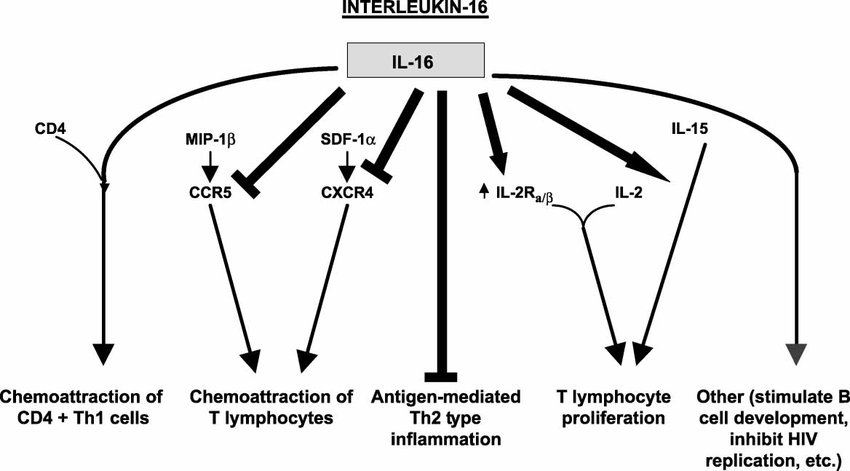Blog Post
Interleukin-16 (IL-16): Unraveling Its Complex Role in the Immune System
Interleukin-16 (IL-16) stands out as a multifaceted cytokine with a complex role in regulating the immune system. Discovered by Dr. David Cruikshank at Boston University, IL-16 has emerged as a key player in orchestrating immune responses and influencing various physiological processes.
1. Discovery and Historical Context
In the early 1990s, Dr. Cruikshank and his team identified and characterized IL-16 as a chemoattractant for CD4+ T cells, laying the foundation for understanding its role in immune modulation. The discovery sparked interest in exploring its potential implications in various immune-related conditions.
2. Molecular Insights into IL-16
At the molecular level, IL-16 is synthesized as a precursor protein, pro-IL-16, which undergoes enzymatic cleavage to form the biologically active form. The primary cellular source of IL-16 is CD8+ T cells, and it acts as a ligand for CD4, the co-receptor on T cells. This interaction triggers downstream signaling cascades, influencing T cell activation, proliferation, and migration.
3. Immunomodulatory Functions
IL-16’s immunomodulatory functions extend beyond its chemotactic properties. It acts as a regulator of immune cell activity, affecting the function of CD4+ and CD8+ T cells, monocytes, and dendritic cells. Furthermore, IL-16 has been implicated in the modulation of allergic responses, autoimmune diseases, and viral infections.
4. IL-16 in Allergic Responses
IL-16’s involvement in allergic reactions underscores its significance in conditions like asthma and allergic rhinitis. It can recruit and activate various immune cells, contributing to the inflammatory milieu observed in allergic conditions. Understanding these mechanisms could offer insights into potential therapeutic interventions.
5. IL-16 and Autoimmune Diseases
In autoimmune diseases, IL-16’s intricate role is exemplified by its impact on T cell activation and the perpetuation of inflammatory responses. Investigations into its involvement in diseases such as rheumatoid arthritis and multiple sclerosis highlight IL-16 as a potential therapeutic target for modulating aberrant immune responses.
6. Therapeutic Implications and Future Prospects
As research on IL-16 advances, its therapeutic potential is being explored. Targeting IL-16 pathways could offer innovative approaches for immune-related disorders. However, challenges lie in comprehensively understanding its dual roles in immune activation and suppression.
In conclusion, Interleukin-16, discovered by Dr. David Cruikshank, continues to captivate researchers with its intricate role in immune regulation. From its foundational discovery to ongoing investigations into its therapeutic potential, IL-16 remains an intriguing cytokine with diverse implications for immune-mediated diseases.
This expanded exploration sheds light on the complexities of IL-16, paving the way for future research endeavors aimed at unraveling its full therapeutic potential in immune-related disorders.


